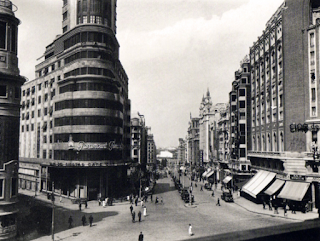With my techy friends all having read books about this long ago (and some of them making loads of money -- and I mean loads!), I really feel I need to learn more about it. :-(
---------- Forwarded message ----------
From: Guadalupe Roldán
Date: Wed, Dec 13, 2017
From: Guadalupe Roldán
Date: Wed, Dec 13, 2017
I hear everyday in my job how my workmates talk about their investment in cryptocurrencies, and I begin to be interested in this issue. Since Bitcoin was invented in 2008, many other cryptocurrencies have been appearing as different tradable digital assets. But what are they? In few words, cryptocurrencies are a form of digital money that are supposed to be secure and anonymous.
We find the origin of cryptography in the Second World War, when it was used a method to keep sure all the communications, through elements of mathematical theory and computer science. The base of these new coins is the same secure outlook.
Not only can we invest in cryptocurrencies and trade them for other currencies, but also can we use our computers to create blocks on the network and generate coins. However, you would need a powerful computer to generate new Bitcoins, so, at the end, you also need to invest money on that.
The world of cryptocurrencies is really wild and even faster than wild, so I consider that spending time before going deep into it is essential to find out if this is a bubble waiting to burst or a good investment.




